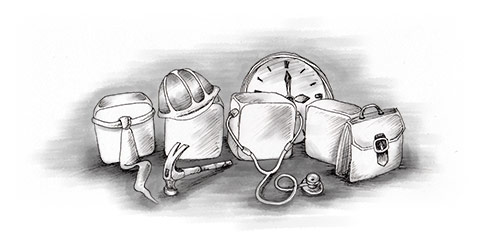Before 1999, the Swedish pension system was based on a two pillar system: a guaranteed pension and an income related one. In 1998 in a cross-party consensus, a reform package was agreed. The new system is now based on a three pillar system:
- A guaranteed pension
- An income-related pension
- A Premium fund
During your working life, 18.5% of your income will go into the pension system. 16% of the contributions will be directly channelled to current pensioners, while 2.5% will go into your premium fund.
The guaranteed pension
The guaranteed pension offers a minimum pension for persons with low pension entitlements or no income. To receive it you must have lived in Sweden for a minimum of three years, while to qualify for the full guaranteed pension, you require at least 40 years of residence. It is payable from the age of 65.
The income-related pension
The income-related pension is drawn from all your earnings during your lifetime from the age of 16. You can start receiving the income-related pension from the age of 61, but the more you contribute, the higher your pension will be. Social insurance benefits, such as sick leave or unemployment benefits, are counted as contributions. Years dedicated to raising children, military service and studies also confer pension entitlements. This pension is indexed to the average wage growth. If you only have one or two years of pension entitlements in Sweden you can transfer your pension points from another EU/EEA country or from countries with which Sweden has a convention.
The Premium fund
During your working life 2.5% of your contributions go into a premium fund of your choice. There are about 500 different funds with different returns. If you do not choose a premium fund, the money will go into the Premium Savings Fund within the National Swedish Fund, which is managed by the Seventh Fund Board. Married couples can transfer their entitlements to each other.
Supplementary insurance schemes
Because public pensions have a ceiling, many high-income earners receive less than they could, as contributions are also capped. Thus, many people take out a supplementary occupational pension. In some companies these are even agreed by collective agreement, with the employer contributing 3.5% of each individual’s earnings towards their supplementary occupational pension. It is advisable to join such a scheme. 90% of Swedish workers are covered by either a group or an individual scheme. When joining a company, ask your trade union if a general occupational pension scheme exists in your company.


